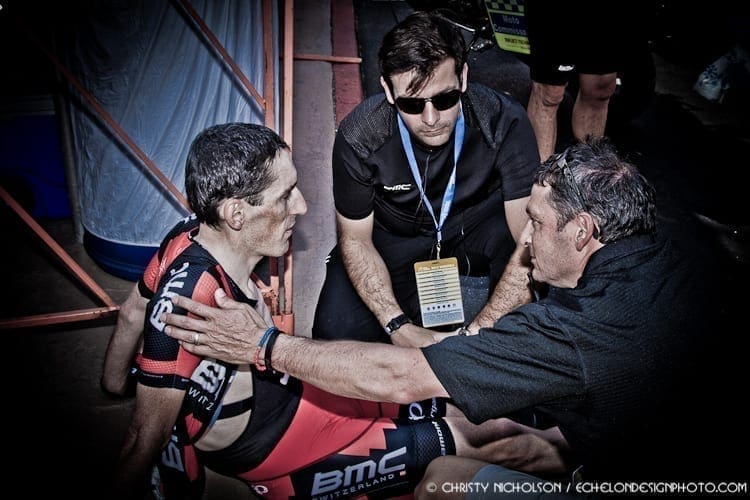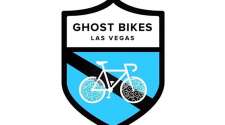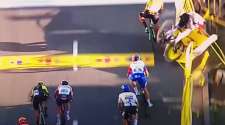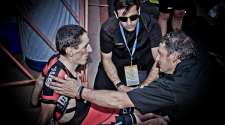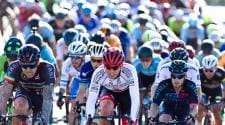As a cyclist chances are that at some point you will be involved in a bike related accident. If you have ever been in a bike accident then you are most likely well aware of the difficulty that can be involved in recovery from that accident. Although much attention has been provided to the physical aspects of recovery from a sport related injury, little attention has been provided into the psychological aspects that might also be involved in recovery. This article will explain common psychological reactions to traumatic injury, explore long term impact of psychological sequelae on performance, and identify strategies to help get you back on the road following a traumatic accident.
Post-Traumatic Stress Disorder (PTSD) and Acute stress Disorder (ASD) may evoke images of war veterans involved in combat following a return from duty. These conditions involve severe psychological reactions to perceived life-threatening events. Most survivors of trauma return to normal given a little time. However, some people will have stress reactions that do not go away on their own, or may even get worse over time. Some people may relive the experience through nightmares and flashbacks, have difficulty sleeping, and feel detached or estranged. These symptoms can be severe and last long enough to significantly impair quality of life. Similar symptoms may be present that indicate difficulty in returning to cycling as a past time following a traumatic accident. Traumas are generally referenced into two categories: type I and type II. Type I trauma represents single, catastrophic, unanticipated experiences (such as a single bike accident). Type II trauma consists of prolonged, repeated, extensive exposure to traumatic events (such as ongoing abuse). This article will only focus on addressing type I traumatic response consistent with Acute Stress Disorder.
So, what exactly is Acute stress Disorder (ASD)? According to the Diagnostic and Statistical Manual of Mental Disorders (DSM-IV) ASD represents a series of PTSD-like symptoms that present within one month following a traumatic event and is met when:
1: You have been exposed to a traumatic event that provokes fear, helplessness or horror with the possibility of death present to yourself or another.
2: You re-experience the event with intrusive distressing recollections or dreams and/or feelings that the event is recurring. Further you experience intense psychological distress or bodily reactions when exposed to internal or external cues that resemble an aspect of the traumatic event (e.g., sights, smells, sounds, dates); these are called triggers.
3: You persistently avoid things or events associated with the trauma and numb your response with selective forgetting or reduced activity that reminds you of the trauma. You experience a restriction of emotions, feel detached from others, and experience fears of a foreshortened future.
4: You have persistent difficulty falling asleep, increased irritability or outbursts of anger, difficulty concentrating, hypervigilance (being overly watchful), and exaggerated startle response (you are jumpy).
5: All of these symptoms present within one month following the incident.
6: Because of these symptoms, you are significantly distressed or impaired in social, occupational, or other important areas of functioning.
For those who may have ASD sudden return to cycling may increase levels of distress and lead to produce panic. Panic may be unexpected and occur without warning. However, upon review there are frequently “triggers” associated with the distress onset. The following are common “anxiety triggers” associated with post-accident cycling:
- Feeling of fast movement
- Sound of brake pads on the rim
- Sound of the wind and/or traffic
- Sight of the ground moving below the tire
- Feeling of wind on face
- Smells such as dry air, dust, gravel, moisture, oil, exhaust fumes
- Feeling of arms on handlebars, body position
- Proximity of other cyclist or motor vehicles
- Length of a decent
- Views of valleys, drop offs
The road back to riding involves a series of skill sets that are not only effective in increasing post-accident coping, but can also be effective aids in increasing competitive performance.
Development/acknowledgement of strengths
Confronting trauma can initially decrease feelings of self-worth and confidence. Make a list of your strengths. Be sure to include;
What first interested you in cycling?
What is it in cycling that you are already good at?
What is it about yourself that seems to fit with cycling?
What continues to bring you back to cycling as an interest?
What others aspects of your life provide similar experiences?
Identifying trauma related beliefs
Trauma frequently changes our beliefs of ourselves and our world and can compromise adaptability. The following are some beliefs that may negatively impact your ability to return to cycling;
I believe that my actions don’t impact others.
I believe that my wants are really my rights.
I believe that I don’t have to live up to obligations.
I believe that things will happen to me just because I think they will.
I believe that fear is weakness, so I deny that I am afraid even when I am.
I believe that I am always supposed to win and that failure is not an option.
I believe I will let others down.
How might your beliefs help or hinder progress towards getting back on your bike? Can you challenge your beliefs to assist yourself in developing a more balanced perspective?
Creating safety
When under extreme pressure the sense of safety can be shaken. Dizziness, derealization and irrational thoughts that one is going to die are often characteristics of panic attacks that might present following trauma. As such, having a safety routine that restores calm is an important step in post-accident recovery. A safety plan can be as simple as a pleasant memory, watching a favorite movie, counting numbers or items to 10 and repeating (such as in a meditation), working on a favorite hobby (your bike), painting, speaking to a friend, etc… All of these can serve as strategies to reinstate a sense of safety. Create your own list to use when feelings, memories and physical reactions become over whelming.
Development of relaxation techniques
Relaxation generally used to assist with accident related trauma or anxiety is referred to as active relaxation. Active relaxation is unique in that it involves formal dedication to develop and generally involves intentional placement of focus and mental attention. It is a way in which one can learn to divert attention from one subject matter (i.e., body tension) to another subject (i.e., identifying unwanted memories of previous trauma). There is an abundance of available relaxation techniques. Progressive muscle relaxation, mindfulness-based stress reduction (MBSR), autogenic training and structure focus are techniques that can be helpful in developing a relaxation routine and typically involve a 15 to 20 minute period of formal practice. These practices can assist in reversal of muscle tension, restored cardiac function, ease gastrointestinal function and promote a general sense of wellbeing.
Creating a SUDS
SUDS stands for subjective units of distress and is based on a 10 point scale of 10=extreme anxiety and 1=extreme relaxation. SUDS is important in that allows you to begin to identify the variation of mental and physical activity that might indicate the onset of panic when processing material associated with a bike accident. Refer to the following list as a sample of SUDS.
SUDS
1=I feel calm. My mind is at ease. I am fully relaxed. My mind is clear
2=I continue to feel calm. My mind wanders, but I am still at ease
3=My mind is wandering more. I am aware of some tension in my body
4=My mind is having difficulty being still. I am aware of muscle tension. My breathing is faster
5=My mind is not still. My breathing is more labored. I am aware of my heart beating faster
6=My mind is beginning to race. My breathing is labored and my heart is beating fast
7=My mind is racing faster and I am having trouble keeping it still. I am afraid I’ll hyperventilate. My heart feels hard against my chest
8=I am aware of anxious thoughts. I am scared. My breathing is escalating. My heart is pounding
9=I am scared. I am unsure if I want to continue this. I can’t control my breathing. My heart won’t stop beating so hard.
10=I am panicked. I am afraid I might die. My breathing and heart beat are out of my control. I feel I have no control of my body
Accident Debriefing
Accident debriefing is a variation of desensitization training which is the process in which one takes an anxiety provoking topic and learns to associate it in a new way that does not provoke distress. It involves methodically recalling the accident while employing the SUDS scale and then using your preferred relaxation method to reduce anxiety responses when distress is at SUDS of 5 or above. Imagine the trauma incident frame by frame from the beginning as if it were occurring in slow motion. In each still frame identify what is happening. What you are seeing from your perspective. How close is the ground? Is there a smell involved? Do you hear sounds (i.e., scrapping, brakes pads, cars, etc…)? Then move to the next frame and repeat. When SUDS hits 5 or above then imagine the scene going blank. Use your relaxation exercise until SUDS has restored to 3 or below then proceed with your imagery where you left off. If you return to SUDS 5 then go back to your relaxation technique until 3 or below. Continue until able to recall the entire incident below SUDS 5.
Mental Rehearsal
Mental rehearsal involves methodically developing a series of images that represent a preferred situation in cycling. Imagine yourself in a similar situation with similar factors involved in your accident, but without the actual accident. Frame by frame go through each scene identifying the emotions, physical sensation associated with your ride. See your surroundings, feel the elements, smell the smells. Make it as real as you can. Imagine frame by frame and in slow motion going through the motions to achieve your end goal. Once you’re able to accomplish this imagery repeat the entire scene in double time. Then repeat again twice as fast. Continue to repeat each time doubling the speed at which you work through the entire series of events. Continue a minimum total of 5 times until your last review is in fast forward motion. If your imagery becomes interrupted by distressing accident memories, then return to your relaxation exercise again until your SUDS is a 3 or below and then return to using mental rehearsal.
In Vivo Exposure/Physical Rehearsal
In vivo exposure is live exposure to the situation that was initially traumatic. During in vivo exposure you will use all of the above skill sets to accomplish progress. If your accident is specific to a particular aspect of cycling (such as descending), then first attempt smaller challenges. Address the challenge in small stages such as 1) getting on the bike 2) pedaling the bike 3) holding the bars 4) approaching a descent. If your incident involves a crash on a descent break the descent into smaller segments. Do not progress to higher challenge until your SUDS is at a 3 or below. Use your relaxation skills to restore calm. Use identified safety routines to redirect thinking away from distressing thoughts. If anxiety persists then you may need to modify mental rehearsal to address your response to these triggers.
As with anything consistent practice is key to progress. Although you may have been involved in an accident, the accident does not necessarily need to define your life. By using the above strategies and arming yourself with knowledge you should be able to make significant improvement in your ability to return to riding your bike within weeks following a serious accident. However, if you continue to have difficulty then seeking professional help through a psychologist familiar with performance based athletics may be helpful.
Article by Eric Yelsa, Ph.D.
Eric Yelsa, Ph.D. is clinical health psychologist in private practice in San Diego. He served as an assistant professor through University of Utah Hospital Pain Management Center Department of Anesthesiology where he worked with a number of elite and professional athletes recovering from sport related trauma. He has been a competitive cyclist since 1981. He is a USAC level 3 certified coach and certified power-training coach, has presented at the USA Cycling, and is an active member of the American Psychological Association Division 47 Exercise and Sport Psychology. He can be reached for consultation at [email protected]
No products found.



